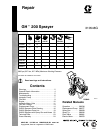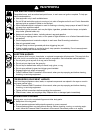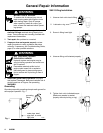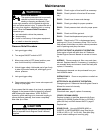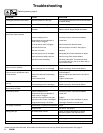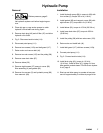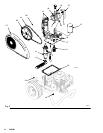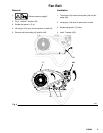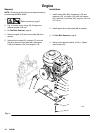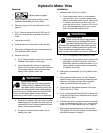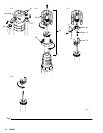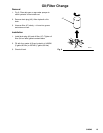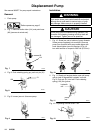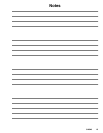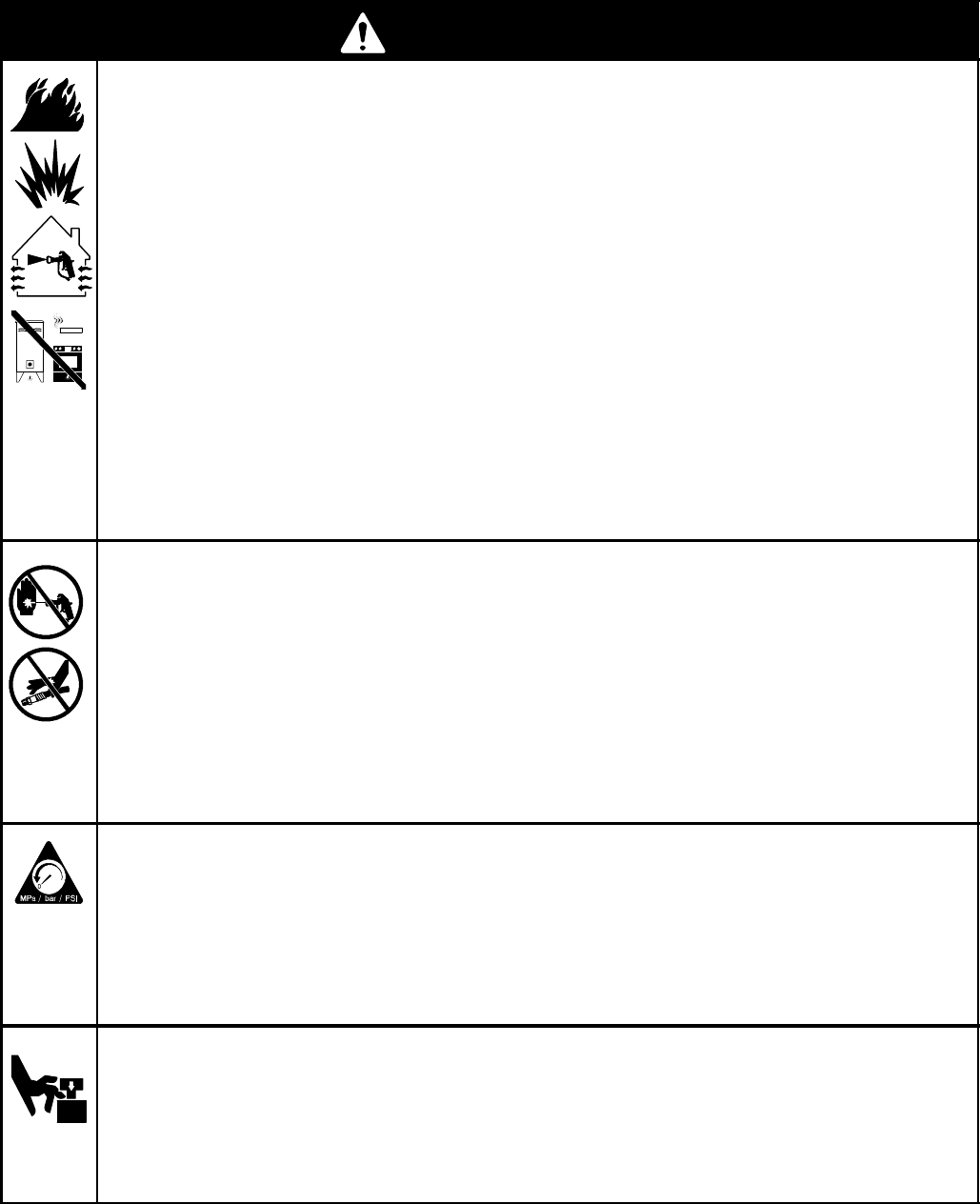
3105482
WARNING
FIRE AND EXPLOSION HAZARD
Flammable fumes, such as solvent and paint fume s, in work area can ignite or explode. To help pre-
vent fire and explosion:
D Use equipment only in well ventilated area.
D Do not fill fuel tank while engine is running or hot; shut off engine and let it cool. Fuel is flammable
and can ignite or explode if spilled on hot surface.
D When flammable liquid is sprayed or used for flushing or cleaning, keep sp rayer at least 20 feet (6
m) away from explosive vapors.
D Eliminate all ignition sources; such as pilot lights, ci garettes, portable electric lamps, and plastic
drop cloths (potential static arc).
D Keep work area free of debris, including solvent, rags and gasoline.
D Do not plug or unplug power cord s, or turn power or light switches on or off when flammable fumes
are present.
D Ground equipment and conductive objects in work area. See Grounding instructions.
D Use only grounded hoses.
D Hold gun firmly to side of grounded pail when triggering into pail.
D If there is static sparking or you feel a shock, stop operation immediately. Do not use equipment
until you identify and correct the problem.
INJECTION HAZARD
High--pressure fluid from gun, hose leaks, or ruptured components will pierce skin. This ma y look like
just a cut, but it is a serious injury that can result in amputation. Get immediate medical attention.
D Do not point gun at anyone or at any part of the body.
D Do not put your hand over the spray tip.
D Do not stop or deflect leaks with your hand, body, glove, or rag.
D Do not spra y without tip guard and trigger guard installed.
D Engage trigger lock when not spraying.
D Follow Pressure Relief Procedure in this manual, when you stop spraying and before cleaning,
checki ng, or servicing equipment.
PRESSURIZED EQUIPMENT HAZARD
Fluid from the gun/dispense valve, leaks, or ruptured components can splash in the eyes or on skin
and cause serious injury.
D Follow Pressure Relief Procedure in this manual, when you stop spraying and before cleaning,
checki ng, or servicing equipment.
D Ti ghten all fluid connections before operating the equipment.
D Check hoses, tubes, and couplings daily. Replace worn or damaged parts immediately.
MOVING PARTS HAZARD
Moving parts ca n pinch or amputate fingers and other body parts.
D Keep clear of moving parts.
D Do not operate equipment with protective guards or covers removed.
D Pressurize d equipment can sta rt without warning. Before checking, moving, or servicing equip-
ment, follow the Pressure Relief Procedure in this manual. Disconnect power or air supply.



